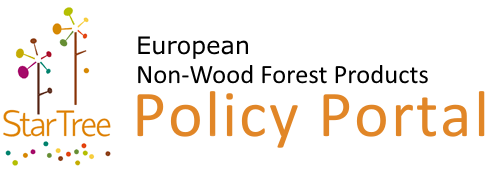Hunters actions for environmental restoration
Description
Brief description of the instrument and its modus operandi
the provincial hunter associations (210 municipality based association and one provincial coordination), coordinated with forest authority, self-finance their selves (in money or in hours of works for the associated members) for the game environment improvement. The main four actions are: 1-cleaning of abandon meadows and pasture land colonized by the forest; 2-cutting of green alder and mugo pine forest to increase the “in-forest” open areas; 3-specific silviculture techniques to increase the understory and shrubs in the forest; 4- grouse silviculture techniques. Every year the forest authority makes a list of potential forest operation to be done in order to improve the game (and wild animals) environment and stock.
Which problem the instrument is supposed to solve?
some little crushes with extreme environmentalist are still going on; none at local level
Purpose or main objective / overall goal of the instrument?
improve the game and general wild animals’ environment to increase the stock
Side objectives/goals of the instrument?
improve the scenic beauty of the landscape in the permanent alpine meadows
Innovation content or potential of the instrument?
improve the output of forest secot with target operations funded by highly motivated forest users
Which laws and regulations support the implement of this instrument?
The main law is the Royal Decree 3267/23 (national forest law) then ammended locally with a specific local act (deliberation of the tecnical cometee n. 174 of the 09 june 1995
The initiator/promoter of the instrument?
the forest hunter association
Which organizations are involved in the operationalization of the instrument?
hunter association is the promoter of the instruments with forest authority, while green association and ISPRA (national research centre for the environmental studies) monitor the effect of the hunting activity (as well the tool)
How the monitoring is ensured?
the forest authority is the one deputed on monitoring
How the compliance is ensured?
whether or not the forest operation are done
How is the overall performance of the instrument?
locally good, though the impact is relative to other environmental factors that are completely independent on forest operation (i.e. the rainfall during the nesting season decrease dramatically the number of grouse chicks; the high number of mushroom pickers destroy the local grouse behaviours increasing their predation)
Brief description of the context for the emergence of the instrument
The pressure of environmentalist groups pushed the hunter to build up a more environmental friedly hunting managemant plan. The mechanism allowed to enhance the stock of game without the investment of public money.
Have any of the items mentioned above changed since the instrument entered into force?
No
What are the main reasons or drivers behind changes mentioned?
shortage of certain game species like grouses and in general ungulates
Is there any qualitative or quantitative study of the impacts of the instrument?
Yes, please specify
Details
Yes: (both qualitative and quantitative) annual wild game report and every five year there is a revision of the hunting management plan
Related to
| Instrument | |
| Year | early ’90 |
|---|---|
| Affected actors | Landowner/land manager |
| Products | Game |
| Countries | Italy |
| Regions (NUTS 2) | Trentino-South Tyrol |
| Geographical scope | Local |
